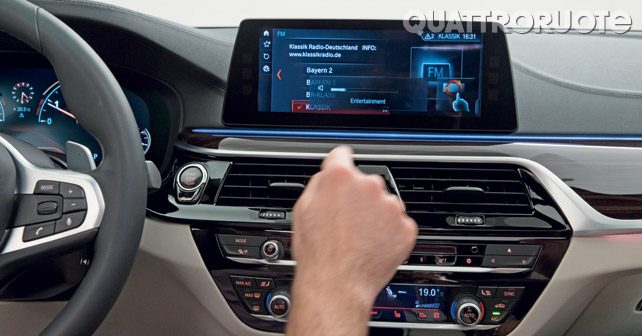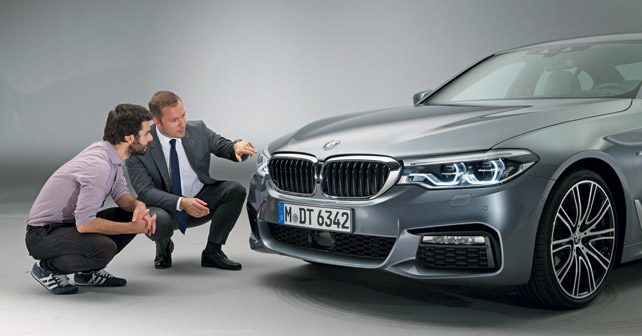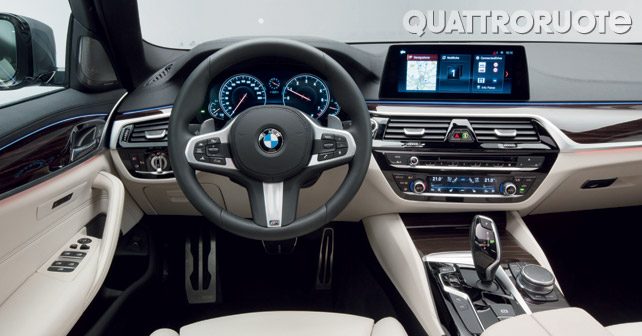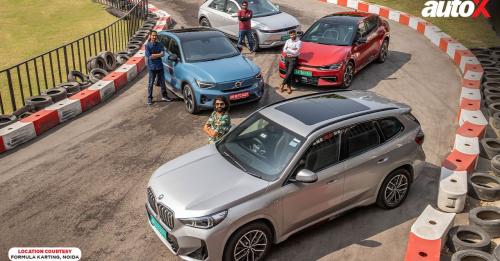The next generation 5 Series loses a hundred kilos without requiring any carbon fibre bits. At the same time, it’s longer and more sculptural – but doesn’t lose its distinct identity. Here are the details.
A clear objective for the new 5 Series was to be substantially lighter than before. The new 5 is based on BMW’s CLAR modular platform, which also underpins the company’s flagship sedan. But, while the 7 Series gets what BMW calls its carbon core construction – which means that carbon fibre plays a structural role in the B-pillars and roof rails – the engineers decided that this wasn’t necessary for the new 5.
NUMBERS MATTER
“Introducing that material (carbon fibre) here would only have added complexity without bringing any significant benefits,” explains Mario Armbruster. “However, it was not a matter of cost,” he points out assertively, “but because of the industrial possibilities. The volumes of the 5 are not compatible at all with the production of the carbon fibre process.” To put it in figures, in the first half of 2016 almost 25,000 units of the 7 Series were sold, while the 5 Series sold 170,000 units – a massive difference in scale. Of course, this only serves to underscore the importance of the 5 Series.
Even today, its sales are only a short distance away from the best-selling 3 Series – which makes the 5 Series the second best selling BMW in the world.
MORE INDEPENDENCE
For the seventh generation (G30), the development team has clearly focused on technological wizardry. In this regard, the new car takes a quantum leap over the outgoing model. Under a familiar body (increased in length by 36mm, measuring up to 4.93 meters), the new sedan strongly responds to its arch rival, the Mercedes E-Class, in terms of driver assistance. The new 5 Series can drive itself on the highway, which even the bigger 7 Series can’t do. “Sit in the driver’s seat,” Armbruster invites me. I turn on the car and instinctively look forward to find a large head-up display that’s far more clear than ever before – it seemed as though it was sprouting out physically from the end of the bonnet. “Thanks to increased computing capacity, we’ve improved the resolution – and then we’ve enlarged it by 70%,” says Armbruster. An integral part of this hi-tech triumph is the remote control that allows you to park your car while you’re standing outside it – just like in the 7 Series. Of course, this feature won’t come to India. What will, though, is Apple CarPlay’s wireless version and new online services from BMW Connected – which can be accessed using your smart phone.
IT’S A PLUG-IN FROM THE GET GO
At its global launch, expected in February 2017, the 5 Series will be available in both RWD and AWD versions. The range will include the 530i (2.0-litre turbo four-cylinder producing 248bhp), 540i (3.0-litre turbo inline six-cylinder producing 335bhp), 520d (2.0-litre turbo diesel four-cylinder producing 187bhp) and 530d (turbo-diesel six-cylinder 3.0-litre producing 261bhp). A month after that, the 520d Efficient Dynamics will arrive (promising over 25km/l), the M550i xDrive and 530e plug-in hybrid developing 249bhp and promising 45-kilometres of zero-emissions driving.
BUILT AROUND THE WORLD
For some time now, the 5 Series has been assembled around the world – from Egypt to Malaysia, it’s built in all four corners of the globe (sometimes even by third-party manufacturers under a license). These strategic choices, however, are typically directed towards local markets. When the new model is launched in India too, it’ll be assembled locally. For Europe, it’ll be built with Magna Steyr in Austria – at a plant that will have the exact same operation procedures as that of the Dingolfing factory in Germany, which has been home to this historic model since its debut in 1972.
WANT A V8?
The M550i xDrive (which will form the basis for the future M5) will get a 4.4-litre V8 pumping out 455bhp (with a 0 to 100km/h time of 4 seconds, which is faster than the current gen M5). It’s also expected that there will be the M550d in future, with a 3.0-litre six-cylinder quad-turbo – with one of the turbines being driven electrically.
[caption id="attachment_84118" align="alignleft" width="642"]
[caption id="attachment_84114" align="alignleft" width="642"]
© Riproduzione riservata
Also read: BMW G 310 R Review: First Ride































Write your Comment